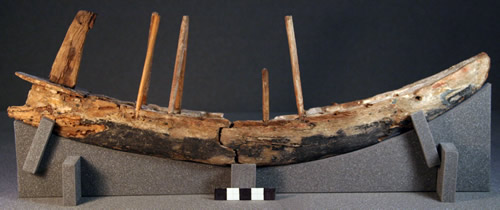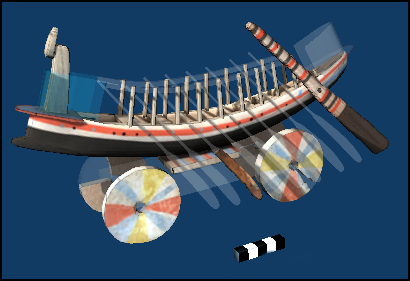Abstract
***
Seaborne Threats and Refuge Settlements
εἰνάκις ἀνδράσιν ἄρξα καὶ ὠκυπόροισι νέεσσιν
ἄνδρας ἐς ἀλλοδαπούς, καί μοι μάλα τύγχανε πολλά.
Crew size and ship capacity
The second, RS 20.18, is addressed from the prefect of Alašiya to King Ammurapi:
The need for speed (and stealth)
αἶψα μάλ᾽ Αἰγυπτίων ἀνδρῶν περικαλλέας ἀγροὺς
πόρθεον, ἐκ δὲ γυναῖκας ἄγον καὶ νήπια τέκνα,
αὐτούς τ᾽ ἔκτεινον· τάχα δ᾽ ἐς πόλιν ἵκετ᾽ ἀϋτή.
οἱ δὲ βοῆς ἀΐοντες ἅμ᾽ ἠοῖ φαινομένηφιν
ἦλθον· πλῆτο δὲ πᾶν πεδίον πεζῶν τε καὶ ἵππων
χαλκοῦ τε στεροπῆς· ἐν δὲ Ζεὺς τερπικέραυνος
φύζαν ἐμοῖς ἑτάροισι κακὴν βάλεν, οὐδέ τις ἔτλη
μεῖναι ἐναντίβιον· περὶ γὰρ κακὰ πάντοθεν ἔστη.
ἔνθ᾽ ἡμέων πολλοὺς μὲν ἀπέκτανον ὀξέϊ χαλκῷ,
τοὺς δ᾽ ἄναγον ζωούς, σφίσιν ἐργάζεσθαι ἀνάγκῃ.
ἠπείρῳ ἐπέκελσεν, ὅσον τ᾽ ἐπὶ ἥμισυ πάσης,
σπερχομένη· τοῖον γὰρ ἐπείγετο χέρσ᾽ ἐρετάων
Pylos, Aḫḫiyawa, and the ra-wi-ja-ja
The second text, attributed to the last Hittite king, Šuppiluliuma II (ca. 1207-1178 BC), mentions a series of three naval skirmishes against the “ships of Alašiya,” followed by a land battle (presumably against the same people he had fought at sea):
Aḫḫiyawa and foreign women
δασσάμεθ᾽, ὡς μή τίς μοι ἀτεμβόμενος κίοι ἴσης.
Αἴγυπτόνδε
Αἴγυπτόνδε με θυμὸς ἀνώγει ναυτίλλεσθαι,
νῆας ἐῢ στείλαντα σὺν ἀντιθέοις ἑτάροισιν.
“He has destroyed the warriors of the Great Green…”
φύζαν ἐμοῖσ’ ἑτάροισι κακὴν βάλεν, οὐδέ τις ἔτλη
μεῖναι ἐναντίβιον· περὶ γὰρ κακὰ πάντοθεν ἔστη.
ἔνθ’ ἡμέων πολλοὺς μὲν ἀπέκτανον ὀξέϊ χαλκῷ,
τοὺς δ’ ἄναγον ζωούς, σφίσιν ἐργάζεσθαι ἀνάγκῃ.
αὐτὰρ ἐμοὶ Ζεὺς αὐτὸς ἐνὶ φρεσὶν ὧδε νόημα
ποίησ’· ὡς ὄφελον θανέειν καὶ πότμον ἐπισπεῖν
αὐτοῦ ἐν Αἰγύπτῳ· ἔτι γάρ νύ με πῆμ’ ὑπέδεκτο·
αὐτίκ’ ἀπὸ κρατὸς κυνέην εὔτυκτον ἔθηκα
καὶ σάκος ὤμοιϊν, δόρυ δ’ ἔκβαλον ἔκτοσε χειρός·
αὐτὰρ ἐγὼ βασιλῆος ἐναντίον ἤλυθον ἵππων
καὶ κύσα γούναθ’ ἑλών· ὁ δ’ ἐρύσατο καί μ’ ἐλέησεν,
ἐς δίφρον δέ μ’ ἕσας ἄγεν οἴκαδε δάκρυ χέοντα.
ἦ μέν μοι μάλα πολλοὶ ἐπήϊσσον μελίῃσιν,
ἱέμενοι κτεῖναι – δὴ γὰρ κεχολώατο λίην–
ἀλλ’ ἀπὸ κεῖνος ἔρυκε, Διὸς δ’ ὠπίζετο μῆνιν
ξεινίου, ὅς τε μάλιστα νεμεσσᾶται κακὰ ἔργα.
Life, prosperity, and health in the land of the Pharaohs
χρήματ’ ἀν’ Αἰγυπτίους ἄνδρας· δίδοσαν γὰρ ἅπαντες.
λάγχανον: αἶψα δὲ οἶκος ὀφέλλετο, καί ῥα ἔπειτα
δεινός τ᾽ αἰδοῖός τε μετὰ Κρήτεσσι τετύγμην.
Conclusion
Figures

Figure 1. Captured Šrdn “prince” from an uncontextualized row of foreign captives on the front pavilion wall of Ramesses III’s mortuary temple at Medinet Habu. The image is captioned “Šrdn of the Sea” (after Epigraphic Survey 1970:Pl. 600b).

Figure 2. Fragments of a krater from Pyrgos Livanaton (Kynos) featuring a naval combat scene (LH IIIC; Mountjoy 2011:485).

Figure 3. Fragments of a locally–made krater from Bademgediği Tepe featuring a naval combat scene (Transitional LH IIIB–IIIC Early or LH IIIC Early; Mountjoy 2011:486).

Figure 4. Fragment of a krater from Pyrgos Livanaton (Kynos) featuring a naval combat scene (LH IIIC; Wedde 2000:no. 6002).

Figure 5. Ship depicted on the side of a LM IIIB larnax from Gazi (Wedde 2000:no. 608).

Figure 6. Ship painted on a Late Helladic IIIC Early pyxis from Tragana (Wedde 2000:no. 643).


Figure 7. (a) Model of a Helladic oared galley from a tomb in Gurob, Middle Egypt. (b) 3D reconstruction of the Gurob ship-cart model. (© Institute for the Visualization of History, Inc.)

Figure 8. Sea Peoples ship N.4 from the naval battle depicted at Medinet Habu, crewed by possible Šrdn fighters (1175 BC; after Epigraphic Survey 1930:Pl. 39).
